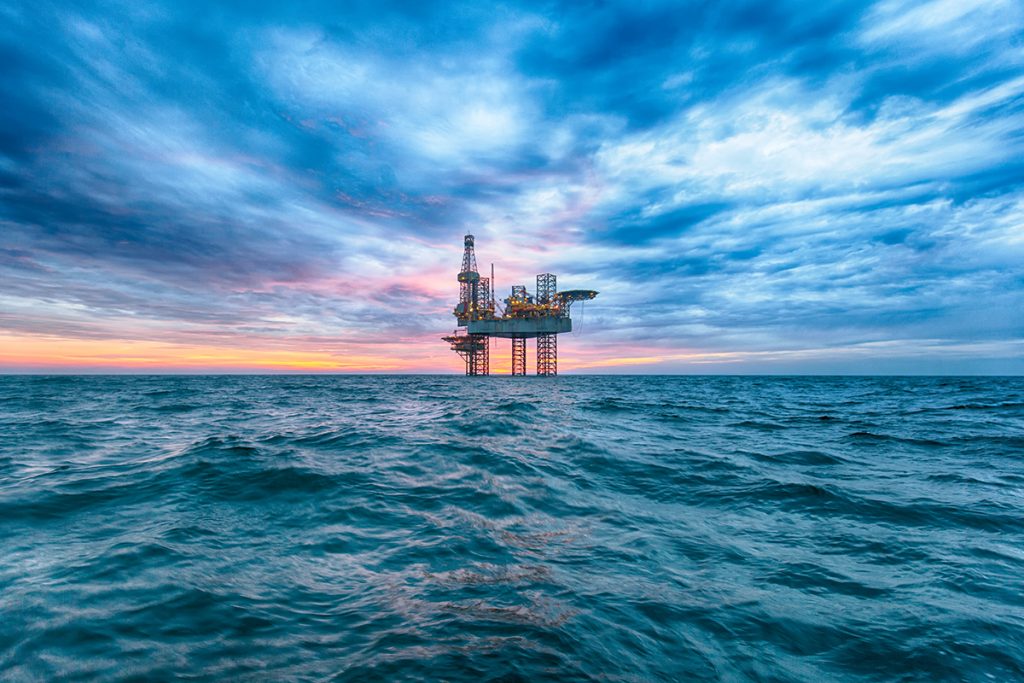Click on a topic below to view frequently asked questions
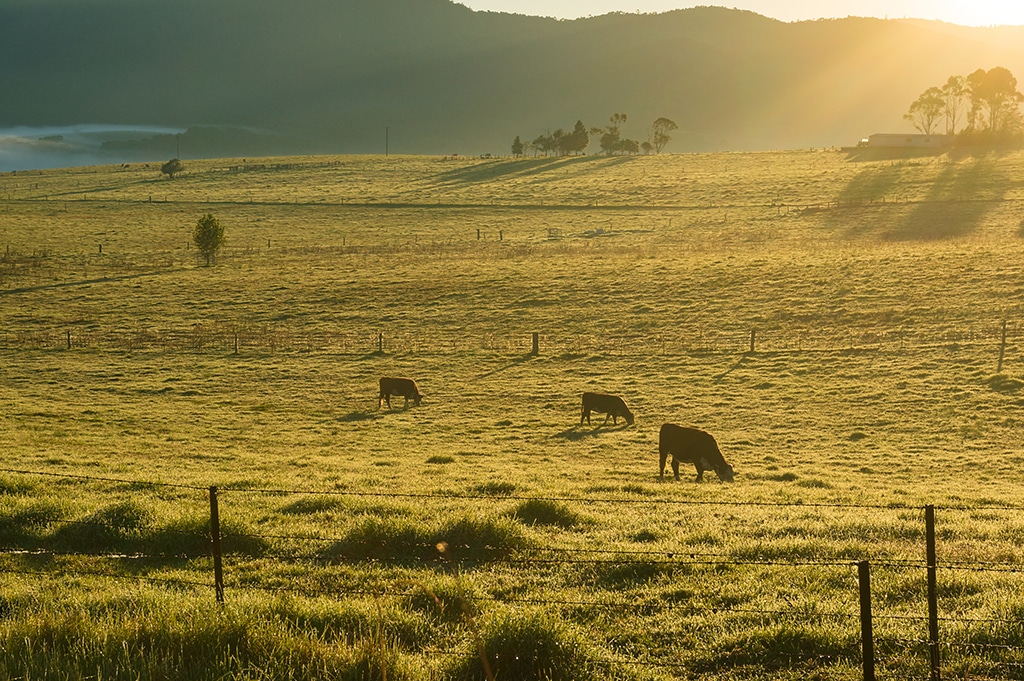
Emissions Reduction
Frequently asked questions
-
What is methane?
Methane is the simplest hydrocarbon molecule – it is made up of one carbon atom surrounded by four hydrogen atoms (CH4). When it combusts with oxygen, it produces heat, water and carbon dioxide.
Methane is naturally occurring and not toxic.
Due to its natural high carbon potency, energy companies work hard to limit fugitive methane emissions in their natural gas production processes. Thanks to their efforts, natural gas production retains its climate benefit in comparison to coal even when minor methane leakage is considered.
-
Is natural gas development increasing the level of methane entering the atmosphere?
The evidence in the United States is showing a decrease in methane emissions associated with the exploration and production of natural gas petroleum products 16% decrease in total between 1990 and 2015, which is not an insignificant change.
It is also important to realise that the switch to natural gas produced electricity has dramatically reduced carbon emissions. The International Energy Agency (IEA) has credited natural gas for helping to stop global energy-related carbon dioxide emissions from growing in 2019.
“Increased use of shale gas (and other gas) for electricity generation could significantly decrease Australia’s greenhouse gas emissions based on gas replacing coal.”
Australian Council of Learned Academies
“Substantial GHG emissions reductions would be possible if gas was used to provide baseload and peak electrical power generation in Australia under scenarios of higher intermittent renewables energy and gas use.”
Australian Council of Learned Academies
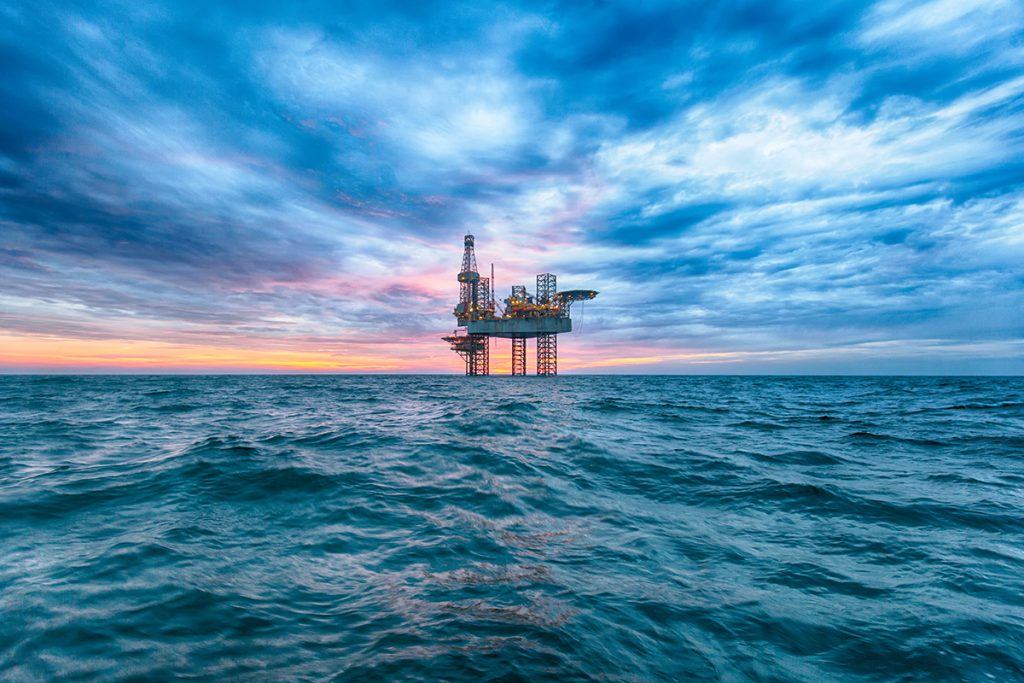
Environment
Frequently asked questions
-
If onshore drilling and fracking are safe, why have I seen videos of people lighting their tap water on fire?
The “flaming tap” footage was highlighted through a documentary called Gasland – but the issue was in fact investigated before Gasland was released.
The Colorado Oil & Gas Conservation Commission found that:
Dissolved methane in well water appears to be biogenic [naturally occurring] in origin. There are no indications of oil & gas related impacts to water well.
In relation to the Condamine River, where similar footage was observed, a report supervised by Queensland University of Technology Professor Malcolm Cox and published in the journal Nature found no evidence of gas migrating from the deep coal seams, and the shallow alluvium in the area (including beneath the river).
The report states:
Evidence of CH4 (methane) migration from the deep gas reservoir to the shallow coal measures (<200metres) or the alluvium was not observed,
There is no evidence of leakage from the deeper gas reservoir to overlying shallow zones in the coal measures.”
The presence of methane in water bores has been documented well before development of the region’s CSG industry as far back as 1919[1]. Following 2.5 years of research into Condamine River gas seeps, the CSIRO stated:
the work has looked at the environmental impact in that area and it shows no impact whatsoever.
[1] Gray, A.R.G. (1967) Natural Gas Occurrence in the Brigalow Area, March 1967. Queensland Government Mining Journal. 68, 394 – 396
-
How do operators stop drilling muds, fracking fluids and petroleum products from escaping the well?
To access the reservoir where the oil or natural gas is located, a well is created by drilling a hole to the required depth.
A steel casing of a slightly smaller diameter than the hole is installed and cement is then injected in the space between the casing and the borehole wall. The cement provides structural integrity and isolates natural formations in the earth from each other and from the surface.
The casing and the cement form a non-porous barrier that prevents cross-contamination between the petroleum-bearing rock formation and any overlying aquifers. The casing and cement work together and are critical to well integrity.
The casing and cement are pressure-tested to ensure that they can tolerate higher pressures than those expected over the life of the well.
Various standards cover the design of wells, the specification of materials and equipment used in their construction, and well operations. As at June 2016, the International Association of Oil and Gas Producers listed over 150 primary standards related to well construction and well operations.[1]
There are also extensive Australia specific codes of practice for well construction, such as the Queensland’s Code for the construction and abandonment of coal seam gas and petroleum wells.
Additionally, a variety of downhole logging tools can be used to measure the state of the casing and the integrity of the bond between the casing, cement and rock.
[1] IOGP 2016
-
Does hydraulic fracturing pose a risk to drinking water supplies?
No. in fact, The Australian Council of Learned Academies found that:
“Because of the large vertical separation between the hydraulic fracturing and the groundwater, the risk of contamination during fracture stimulation treatments is low.”
While the Northern Territory’s Scientific Inquiry into Hydraulic Fracturing in the Northern Territory concluded that:
“The panel concluded, provided that a well is constructed to a high standard and in a way that takes into account the local geology and has passed all of the relevant integrity tests prior to, during and after hydraulic fracturing, there is a ‘low’ likelihood of integrity issues arising out of its initial construction.”
And from the Australian Council of Learned Academies:
“The evidence suggests that, provided appropriate monitoring programs are undertaken and a robust and transparent regulatory regime put in place (and enforced), there will be a low risk that shale gas production will result in contamination of aquifers, surface waters or the air.”
-
How much water is used during hydraulic fracturing?
The volume of water required depends on the size and length of the well, and the properties of the rocks that are to be fractured. Hydraulic fracture stimulations occur in stages and each stage requires a certain amount of water.
The Western Australian The Department of Mines, Industry Regulation and Safety provide the following summary of water used for hydraulic fracturing:
The publication by the United States Department of Energy, Modern Shale Development in the United States: A Primer (2009), states that a single stage fracture in the US requires approximately 2 Megalitres (2ML = 2,000,000 litres ) of water – a standard Olympic sized swimming pool contains 2.5MLof water. The CSIRO estimate 5 to 30 ML of water is used in a shale gas well, with an average of around 15 ML per well.
Fracture stimulation in the Perth Basin may require three stages of hydraulic fracturing per vertical well (of up to 3km deep). This equates to using around 7 ML of water per vertical well: 1MLfor drilling and 6ML for hydraulic fracturing. This is equivalent to 2.8 Olympic size swimming pools. For horizontal wells (with a horizontal reach of one kilometre) using 10 fracture stages, around 20ML would be required for hydraulic fracturing and 1 ML for drilling. This equates to about 8.4 Olympic size swimming pools. In the United States horizontal wells are typically drilled to lengths of around 1.5 km, and occasionally to lengths of around 3 km. Importantly, the more fracture stages a single well has, the less wells that are required to be drilled.
As a comparison, an 18 hole golf course requires somewhere between 360ML and 550ML of water per annum to maintain the greens and fairways.
Other comparisons requiring the same amount of water as a 10 stage horizontal fracture well (20ML) include:
- 1,100 head of cattle or 11,000 head of sheep for one year.
- irrigating just under 1 hectare of lucerne, or a 1 hectare commercial sized market garden for one .
- 8 Olympic sized swimming pools.
- the amount of water used by 45 domestic garden bores in the Perth metro area.
However, it is important to note that the quality of water for use in drilling and hydraulic fracturing does not need to be potable. Brackish or saline water can be used, as well as recycled water. It may need to be pre-treated depending on the constituents.
Water used during operations can also be recycled.
-
Can water used for hydraulic fracturing be recycled?
According to Western Australia’s Department of Mines, Industry Regulation and Safety the State’s lead regulator for petroleum activities, wastewater from drilling and hydraulic fracturing stimulation may be re-used or disposed of through:
- Recycling: The fluid that flows back to the surface may be reused in the drilling/hydraulic fracturing of another well (typically within four weeks).
- Evaporation ponds: Open ponds or pits constructed with clay are lined with a double layer of high density polyethylene plastic. When the water evaporates, drill cuttings and chemicals remain in the pond. At the end of drilling operations, the contents of the ponds are tested for contaminants. If any contamination is present, all contaminated material is excavated and taken to a licenced waste facility for disposal. The plastic liners are also removed and disposed of at a waste disposal facility and the pond is backfilled, re-contoured and rehabilitated.
- Enclosed tanks: Fracture fluid can also be stored in enclosed tanks to be disposed of or re-used as required. This may be preferable in environmentally sensitive areas, or where there is risk of exposure to animals.
-
What happens if an operator impacts on another groundwater user?
Conservation and protection of groundwater and surface water is a major priority during all oil and gas activities. The latest research by the CSIRO confirms that subsurface risks as a result of well integrity or hydraulic fracture stimulation is considered to be low, and that the risks to people or groundwater dependent terrestrial ecosystems from subsurface chemicals are considered to be very low.
In Queensland, the industry is more of a supplier than a user of water. Most water removed as a by-product of gas production is treated and provided free or at low cost to other users such as agricultural users and local government or used to recharge aquifers. Industry in Queensland has invested more than $3 billion in water treatment infrastructure, and over 40,000 ML of water was provided by the industry for beneficial use in 2016/17 with 83 per cent of this volume used for irrigation.
There are regulations in each state or territory which cover this aspect, for example in Queensland coal seam gas companies are legally required to make good any depletion of bore-water that could affect landholder activities.
Options include:
- Deepening a pump
- Increasing the size of a pump
- Drilling a new bore into a different aquifer
- Supplying water from a different location
- A financial arrangement.
Any measure taken to deal with the problem must be by agreement with the landholder.
In Queensland, every CSG company must also produce an Underground Water Impact Report that identifies likely impacts of its operations over the coming three years. The company is legally required to take action to deal with these projected impacts on landholders before the impacts actually occur. Government and industry will not wait to see a drop in water levels before taking action.
If a sudden change in water levels occurs, the Department of Environment and Heritage Protection can compel a CSG company to make good any impacts as quickly as possible. The government can also undertake work itself and bill the CSG company.
The burden of proof rests on the government and the CSG company, not the landholder. The priority is reinstating water supply in the shortest possible time.
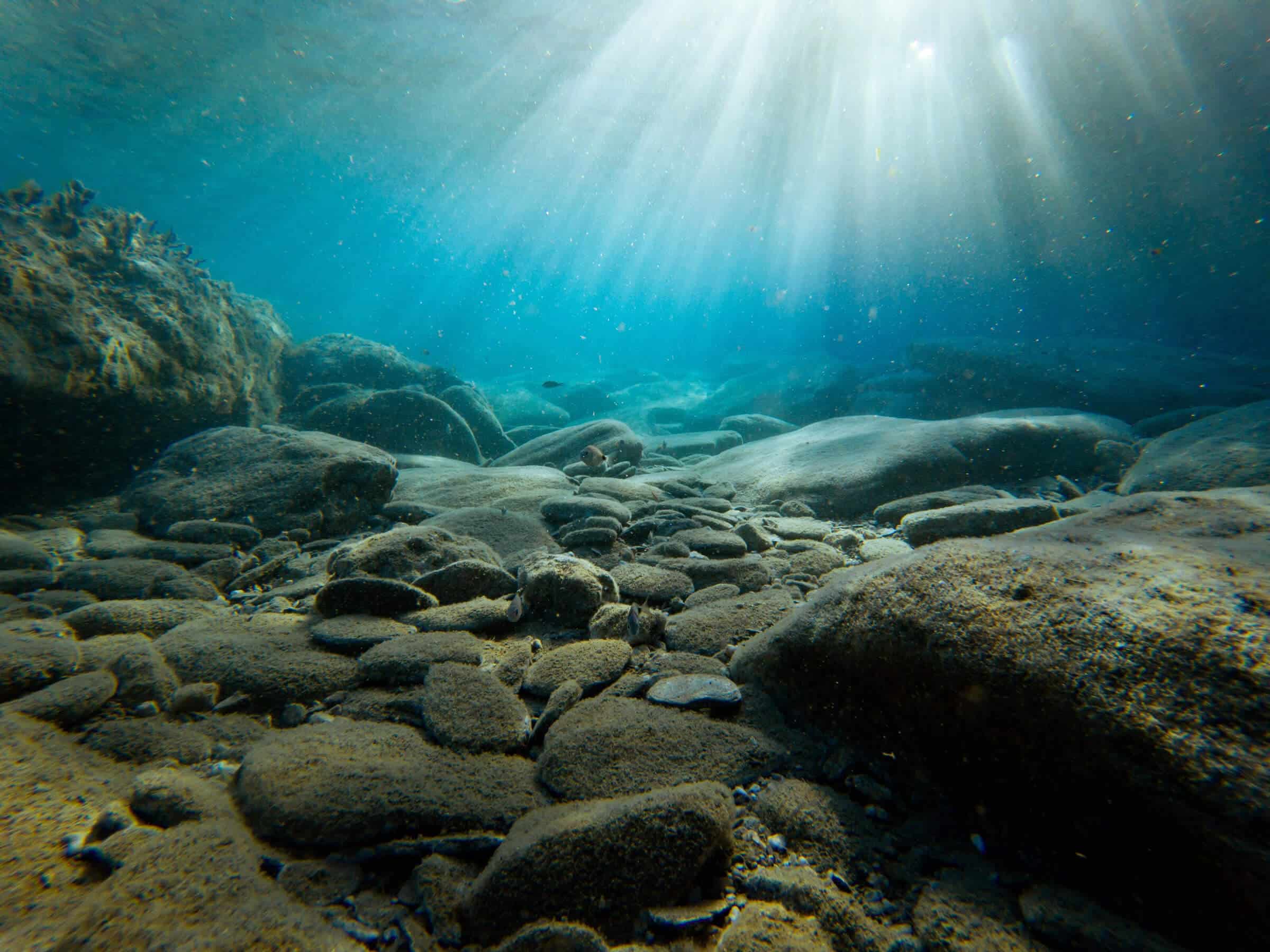
Exploration and Extraction
Frequently asked questions
-
What is hydraulic fracturing?
Depending on the subsurface formation, a technique called hydraulic fracturing is sometimes used to release the gas trapped deep underground ? and involves pumping a fluid down the well at high pressure to open tiny cracks in the target rock reservoir.
Hydraulic fracturing has been safely used in Australia for over 60 years.
Alternatively, you can download our Hydraulic Fracturing 101 fact sheet.
-
Is hydraulic fracturing only used for oil and gas development?
No, it isn’t. In fact, over the past 60 years, the technique of hydraulic fracturing has been used for a wide variety of purposes, from stimulating the flow of water from water wells, to bringing geothermal wells into commercial viability.
-
How long have we been fracking wells in Australia for?
The technique of hydraulic fracturing can be traced back over 60 years in Australia.
Fracture stimulation has been safely used to enhance flows from both conventional and unconventional reservoirs in more than 750 wells in South Australia since 1969. There is no evidence of adverse impacts on aquifers within the Great Artesian Basin and other shallower aquifers from these fracture stimulation operations.
While in Western Australia, regulated petroleum activities have been occurring in the state for the past 60 years without compromising health, safety or the environment. During that period, nearly 780 hydraulic fracture stimulation activities have been conducted without major incident.
-
Can fractures made during hydraulic fracturing operations extend vertically into drinking water aquifers?
No, there are several factors preventing this occurring during operations. Each fracture stage is individually engineered and controlled to limit fractures to the oil and gas bearing rocks. Extensive research on hundreds of wells in the US has conclusively demonstrated that the fractures induced by the process are confined to the rocks close to the target zone.
Furthermore, fractures are controlled and monitored during hydraulic stimulation operations to ensure:
- Environmental protection
- Economic efficiency (gas escaping out of the target zone is lost production, targeted fractures are less costly)
A recent report by the CSIRO found that hydraulic fracturing is unlikely to reach people or groundwater dependent terrestrial ecosystems. Risks are therefore likely to be very low.
-
Does the fluid used for hydraulic fracturing inject BTEX chemicals into the ground?
BTEX chemicals are not used in fracking fluid in Australia. That said, BTEX chemicals (benzene, toluene, ethylbenzene and xylene) are sometimes found naturally occurring in water sources. In some instances, trace levels of these chemicals may be detected at a site which has been fracture stimulated, even where they have not been used by the operator.
BTEX standards apply to all new and existing petroleum, geothermal and greenhouse gas storage operations as a condition of their environmental authority.
-
Is the composition of fracking fluids a secret?
No. In Australia, it is mandatory for operators to release a full list of the chemical compounds used during drilling and fracking operations. In Western Australia, for example, regulations require petroleum companies to publicly disclose all chemicals and additives introduced to a well or formation during hydraulic fracture stimulation. Chemicals and additives introduced to a well or formation are publicly listed on the department?s website.
While the exact nature of the fluid mixtures used by companies will vary due to the different geological environments, the core components are very similar. Learn more about fracturing fluid.
-
Does fracking cause earthquakes?
There is no evidence to suggest that the hydraulic fracturing process can produce measurable earthquakes in areas that do not contain susceptible faults. Occasionally, microseismic events can occur but these are imperceptible to humans. Here’s what some of the experts have said:
“Fracture stimulation can induce seismic activity, however, most of these seismic events are usually small (microseismic) and only able to be detected with local monitoring. Large seismic events can be induced by hydraulic fracturing in the presence of a pre-stressed fault, but these events are rare.”
The Independent Expert Scientific Committee on Coal Seam Gas and Large Coal Mining
“The possibility of hydraulic fracturing causing earthquakes of sufficient magnitude to cause structural damage (2 or greater on the Richter scale) has been examined.? Based on an extensive review of the evidence, the Panel has concluded that this is unlikely to occur as a result of hydraulic fracturing for onshore shale gas in the NT.”
Scientific Inquiry into Hydraulic Fracturing in the Northern Territory
“The Committee finds that the risk of induced seismicity associated with hydraulic fracturing of shale pays at any depth is negligible.”
– Western Australia’s Standing Committee on Environment and Public Affairs
-
Why do operators drill some wells horizontally?
Directional drilling can reduce oil and gas wells surface impacts while also improving production.
Also called horizontal drilling or deviated drilling, directional drilling involves deliberately shifting a well’s path from the vertical. Wells can be deviated until they are running horizontally.
Reasons for directional drilling include:
- To avoid a surface site that is operationally difficult or environmentally sensitive, or in some instances, operators can drill a well to an offshore subsurface locations from an onshore surface site.
- Reducing costs or surface impact by drilling several wells in different directions from the one surface location
- Enhancing oil and gas production by drilling in a way that exposes more of the reservoir to the wellbore.
To steer the well path, rotary steerable equipment is mounted on the drill pipe just behind the drill bit. These systems can be remotely steered from the surface to redirect the drill bit to deviate the well on any desired path.
Directional drilling is very precise. Wells kilometres deep can be directed to within centimetres of their targets.
-
Why are seismic surveys necessary?
Companies use seismic surveys to produce detailed images of local subsurface geology to determine the location and size of possible oil and gas reservoirs.
Explorers generate seismic (sound) waves and measure the time taken for the waves to travel from the source, reflect off subsurface features and be detected by receivers at the surface. This can help build an image of the subsurface.
The process is used by operators for both onshore and offshore projects. We’ve detailed the process more comprehensively on our website or alternatively we also have a fact sheet available which details the offshore seismic process.
-
Do offshore seismic surveys impact whales and other marine life?
The oil and gas industry has been using offshore seismic surveys for over 50 years in Australia. In all of that time there has been no negative impact on a commercial fishery, nor an impact on the viability of marine species or marine ecosystems.
Here’s what some of the experts have said:
“The surveys were completed with no evidence of adverse effects on whales – The “song” of the whales was recorded both during and after seismic was acquired and the results indicated that the whales continued to “sing” during times when seismic data were being acquired – no avoidance or evasive behaviour was evident during the surveys”
Humpback whales of the Perth Basin ? Studies conducted during Roc Oil’s 2002 Seismic Program
“Roc Oil’s 2003 seismic survey program was completed with no detectable adverse effects to the whales’ migration.”
Humpback whales of the Perth Basin – Studies conducted during Roc Oil’s 2003 Seismic Program
“Given the relatively small scale of seismic activity, the often large scale over which biological events occur, and the low probability of encounter between seismic surveys and ‘at risk’ populations at an appropriate time and place, then the wider implications of disruption by seismic surveys appear to be small for most species.”
– Environmental Implications of Offshore Oil and Gas Development in Australia
In fact, marine seismic surveys have been used off Australia’s coasts for more than 50 years a period in which whale populations off the coast of Australia were steadily increasing as commercial whaling was increasingly restricted, and then banned. In fact, there has been significant press coverage of increasing whale populations in Australia’s waters.
If you’d like to read more extensively on this topic, we have compiled some of the independent expert research on the topic into a fact sheet.
-
Can seismic surveys impact the catch rate of fish?
Another concern among some individuals is that marine seismic surveys adversely impact local fishing industries. There has been no evidence to corroborate these claims. Seismic has been used for over 50 years in Australian waters, and fisheries in regions that host oil and gas activities continue to be some of the most productive in Australia.
“The project provided no clear evidence of adverse effects on scallops, fish, or commercial catch rates due to the 2015 seismic survey undertaken in the Gippsland Basin … The effects of seismic surveys on catch seem transitory and vary among studies, species, and gear types.”
“The study has not clearly identified negative (or positive) effects of seismic surveys and subsequent fisheries catch rates identified by analysis conducted in the study.”
– The Commonwealth Scientific and Industrial Research Organisation
“There were no clear or consistent relationships between seismic surveys and subsequent fisheries catch rates identified by analysis conducted in this study.”
– The Commonwealth Scientific and Industrial Research Organisation
These Australia-specific scientific studies are supported by experiences in other countries. For example, Norway – one of the world’s largest energy exporters – has been conducting marine seismic surveys since 1969 and has one of the most prolific commercial fishing industries.
Our fact sheet on marine seismic surveys also has extensive independent information about the process.
-
How loud is a marine seismic survey?
The noise generated by marine seismic surveys is analogous to many naturally occurring marine sounds – including those made by some animals themselves. For example, a sperm whale click has a sound intensity and pressure in the same range of a seismic acoustic source.
Given the noise-level, marine seismic operators ramp-up slowly, over a period of thirty minutes, in order to give any wildlife that may be perturbed by it the opportunity to move away.
Operators engage independent Marine Mammal Observers (MMO), who are trained and experienced in whale identification and behaviour and distance estimation to make sure that no whales are in the area. The MMOs are also trained to provide advice should whales be encountered.
If you have other queries about marine seismic surveys, our fact sheet provides a comprehensive set of independent information.
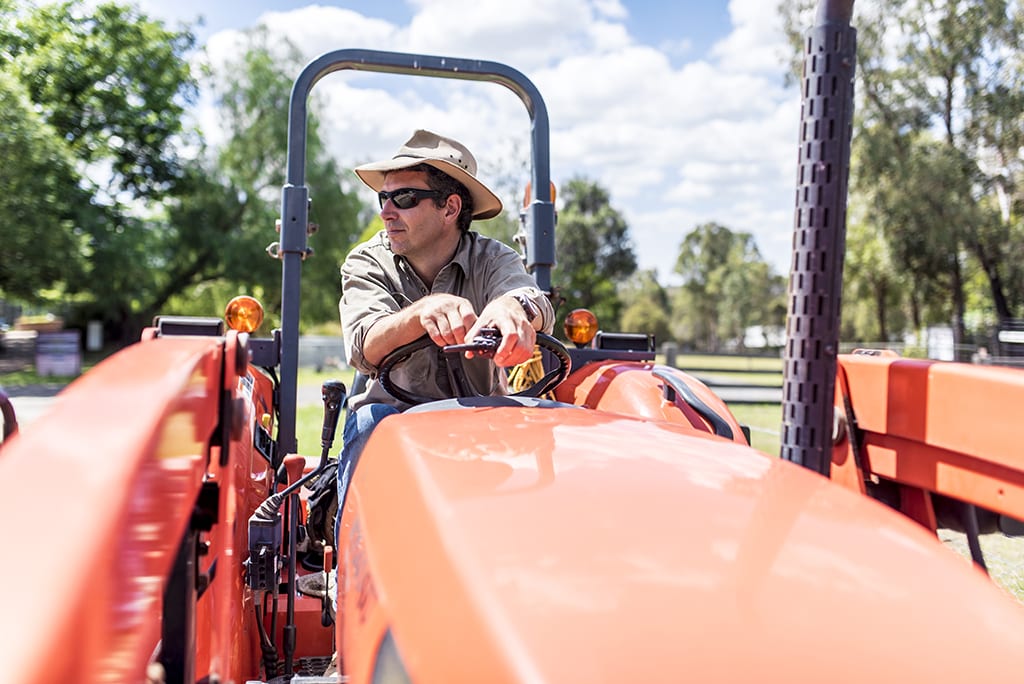
Land Access and Coexistence
Frequently asked questions
-
Are there regulations governing land access?
Yes – every aspect of exploring for and developing petroleum resources is covered by robust legislation that is overseen by a Government agency. Operators acknowledge that they are using a landholder’s property and fairly compensate them for allowing access to their properties.
According to the Gas Fields Commission Queensland:
“Land access refers to onshore gas companies entering a landholder?s property to conduct a range of activities relating to the exploration, development and extraction of gas from underground.”
Under Queensland laws, all resource companies undertaking work on private land, including the onshore gas industry, have to comply with the Land Access Code.
The Queensland Government has developed A guide to land access in Queensland to assist landholders and resource companies in understanding Queensland’s land access laws.
All onshore gas companies undertaking exploration and development activities must comply with Queensland’s land access laws. These activities are usually classified in three phases:
- Preliminary activities, such as walking the area, taking soil samples or survey pegging (minimal impact on landholders)
- Advanced activities, such as infrastructure construction (longer term and/or extensive impacts on landholders)
- Decommissioning activities, such as rehabilitation for wells or pipelines
An onshore gas operator accessing private land to undertake ‘advanced activities’, must first enter into one of the following land access agreements with the landholder:
- Conduct and compensation agreement (CCA) – relates to the proposed advanced activities, conduct for the proposed activities to be undertaken and, where there is impact on the landholder, compensation arrangements for those activities (view our fact sheet for more information)
- Deferral agreement – allows for a CCA to be entered into at a later date and after the resource company has accessed the land to undertake advanced activities
- Opt-out agreement – provides a legally binding arrangement between a landholder and a resource company where the landholder is agreeing to opt-out of negotiating a CCA or a deferral agreement
As at 30 June 2017 landholders in Queensland had negotiated a total of 5,711 CCAs with the onshore gas industry. Compensation already paid under these CCAs including upfront and annual payments is estimated to total $387 million at 30 June 2017, and can range from small payments for minor works to over $1 million for major gas field developments.
-
What happens if a landholder doesn’t agree to an operator accessing their property?
In the unlikely event that an operator and a landholder can’t come to a mutually beneficial arrangement, there are avenues for resolving the situation.
For example, in Queensland petroleum and gas companies are required under Queensland law to enter into a land access agreement (i.e. a conduct and compensation agreement, deferral agreement or an opt-out agreement) with landholders if they wish to carry out advanced activities on private land.
The Land Court of Queensland provides further information on the dispute resolution options they provide, including a panel of qualified convenors who can help resolve disputes without the need of a hearing.
-
Can the industry and tourism agriculture co-exist?
Absolutely. The experience in many parts of the world shows that well planned and well managed industry operations can – and are – working harmoniously alongside a range of other industries and land or ocean users while also providing additional employment opportunities, stimulating regional economies, providing substantial royalty payments and delivering a vital source of energy to both domestic and international export markets.
For example, in October 2015 the onshore oil and gas industry and farmers in Western Australia collaborated to model an agreement to support agricultural productivity in areas being explored for onshore gas.
Peak bodies in the agricultural and petroleum sectors worked together for more than two years on the co-operative project. Under the terms of the agreement, landowners will get access to expert advice, detailed information and appropriate management plans to ensure the continued success of farming in areas such as the Mid-West.
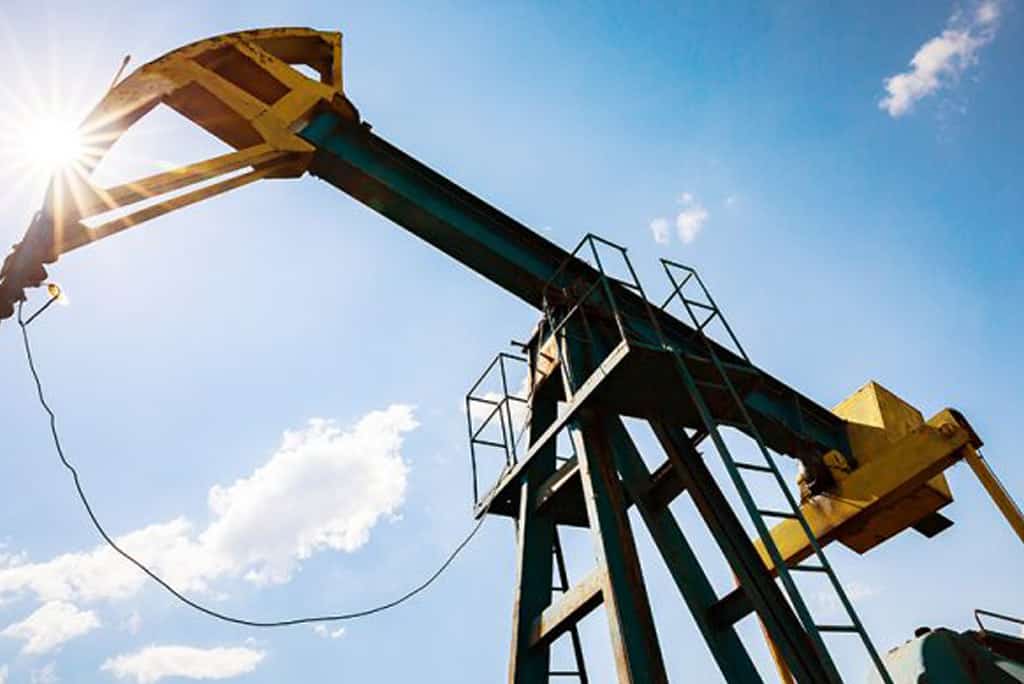
Major Projects
Frequently asked questions
-
What is a rig?
-
What regulatory agencies are involved in the development of an oil and gas project?
Oil and gas is a tightly regulated industry that operates under strict guidelines and is answerable to numerous federal and state government agencies. Exploration and production operations are regulated by strict rules in relation to aspects such as environmental management, water management, land access and other operational requirements.
Onshore
Any potential onshore activity is regulated by each state or territory’s respective government agency.
For example, in Western Australia The Department of Mines, Industry Regulation and Safety (DMIRS) is responsible for regulating the resources industry in Western Australia.
DMIRS’ role is to ensure the highest levels of safety, health and environmental standards are achieved in accordance with State and Australian Government legislation, regulations and policies. The ultimate goal is to ensure the safe and responsible development of the State’s resources for the benefit of all Western Australians.
The Department released an overview of Western Australia’s guide to the regulatory framework in August 2016 which outlines the comprehensive process operators are required to go through before they are approved to perform any operations on site.
The key statutes, administered by the regulator relating to shale and tight gas, are the Petroleum and Geothermal Energy Resources Act 1967, the Petroleum (Submerged Lands) Act 1982 and the Petroleum Pipelines Act 1969 and associated regulations.
The regulator’s lead agency role is complemented by key regulatory processes undertaken by the Department of Water, as well as the Environmental Protection Authority (EPA) and Office of the Environmental Protection Authority (OEPA). Other State Government agencies, including the Departments of Environment Regulation (DER), Parks and Wildlife (DPaW), Aboriginal Affairs (DAA), Health (DoH), Planning (DoP), and the Radiological Council support these major regulatory agencies.
Offshore
Much the same as for onshore, before any offshore petroleum activity can begin in Commonwealth waters a number of government approvals must be gained.
Firstly, the company proposing the activity must obtain an offshore petroleum title which secures rights to undertake petroleum activities in the title area. Relevant state and federal ministers (called the Joint Authority) and the National Offshore Petroleum Titles Administrator (NOPTA) grant titles. NOPTA also manages the day-to-day administration of titles.
NOPSEMA has no role in the granting or administration of offshore petroleum titles.
While the granting of a title provides a company with rights to undertake petroleum activities in the title area, NOPSEMA’s role is to ensure the activity does not begin until the company proposing it can demonstrate that it will be undertaken in accordance with the law and in a manner that protects the offshore workforce and environment.
Approval to begin an offshore petroleum activity is only granted after NOPSEMA has conducted a thorough and rigorous technical assessment of the relevant risk management plans and has determined the plans meet all the requirements of the law. Risk management plans may include a safety case, well operations management plan, offshore project proposal and environment plan.
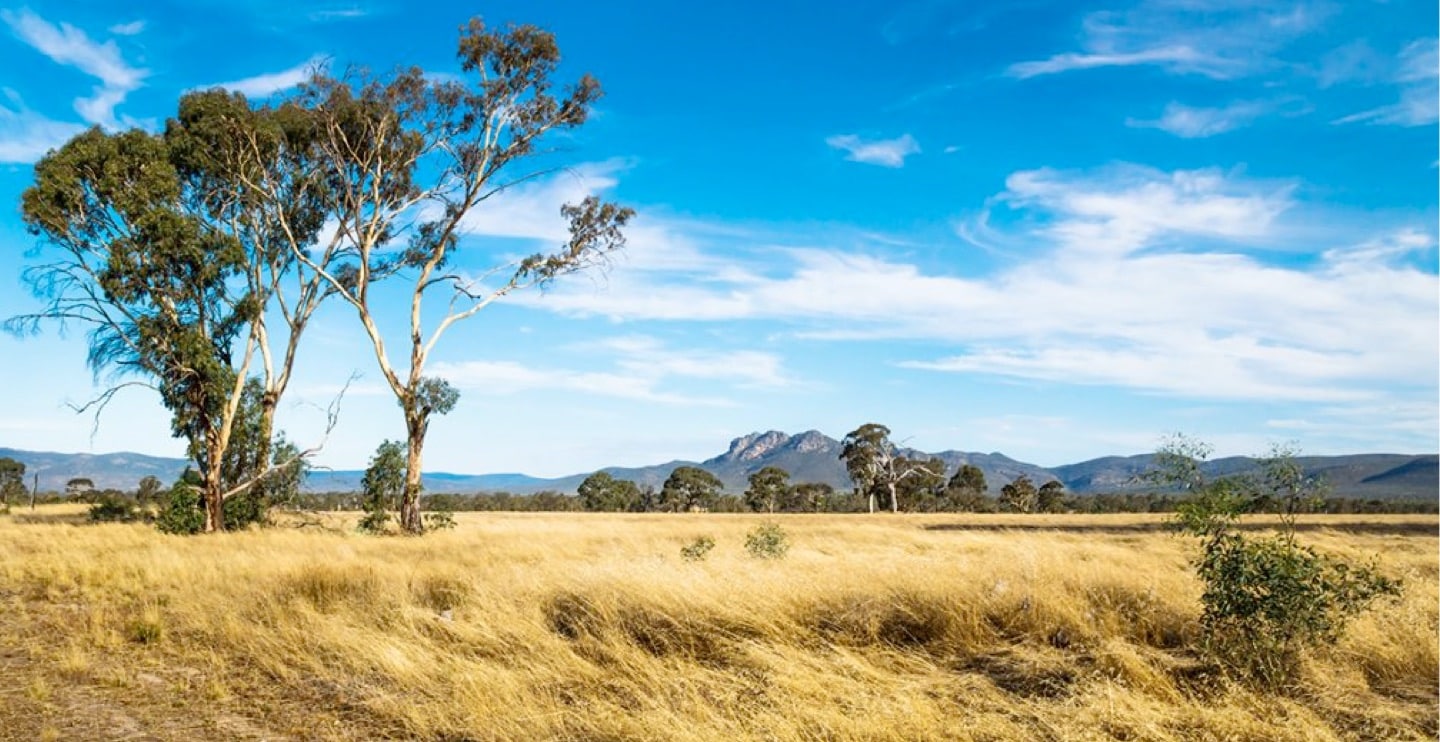
Rehabilitation and Restoration
Frequently asked questions
-
What happens to the well when production ends and the resource has been extracted from the reservoir?
Once a well has reached the end of its useful life, it must be remediated (the industry term is “plugged and abandoned”). Steps taken to remediate a well are usually well-defined by the relevant regulator.
Well remediation typically requires using a drilling rig to remove any equipment in the wells, such as subsurface pumps and pipe tubing. Cement is then pumped into the well to create long-term barriers to fluid flow and isolate rock zones.
Once this is done, the well-head is removed. In onshore wells, the well-head is cut off below ground level so that agriculture or other practices can resume over the well site.
In all jurisdictions in Australia, for example, companies are required to:
- Isolate groundwater aquifers within the well from each other and hydrocarbon zones;
- Isolate hydrocarbon zones from groundwater aquifers and zones with different pressure;
- Isolate surface casing or production casing from the open hole;
- Place a surface cement plug in the top of the casing; and
- Remove the wellhead.
Monitoring may be conducted after the well has been abandoned, to confirm that plugs have been properly set in the well. The well’s ongoing integrity should not be dependent on long-term monitoring, although such monitoring may be conducted to confirm the effectiveness of abandonment practices.
The method of plugging and abandoning a well involves confirming the well’s integrity to ensure that there will be no movement of fluid into or out of the well and placing barriers in the well to prevent the vertical movement of fluids between rock layers.
-
What happens to the surrounding land and environment?
When a natural gas well is no longer required, it must be decommissioned and the site fully rehabilitated. The project infrastructure will be progressively decommissioned and the land rehabilitated throughout the project life.
Final decommissioning and rehabilitation will be undertaken at individual infrastructure sites once production is complete in that area – or an exploration site was proven to be uncommercial in nature and didn’t reach production.
Decommissioning and rehabilitation activities are undertaken in accordance with the relevant approvals and regulatory requirements.
Rehabilitation standards are set well before any activities commence on site – so both the operator, the landholder and the regulator have a clear understanding of an operator?s intentions and commitments.
Rehabilitation is a formal arrangement and overseen by a regulator.
-
What happens to the infrastructure on an operational site which isn’t directly related to the drilling of a well Is everything removed?
When a natural gas well is no longer required, it must be decommissioned and the site fully rehabilitated. The rehabilitation requirements are based on results of environmental studies undertaken to establish baseline conditions.
However, many landholders also negotiate in-kind outcomes such as leaving fencing, access roads or water bores in place, and in some instances have also gained access to treated water for agricultural purposes.
ABC Lateline. (2015). Available at: https://www.abc.net.au/lateline/interview:-dr-alan-finkel,-newly-appointed-chief/6890722
